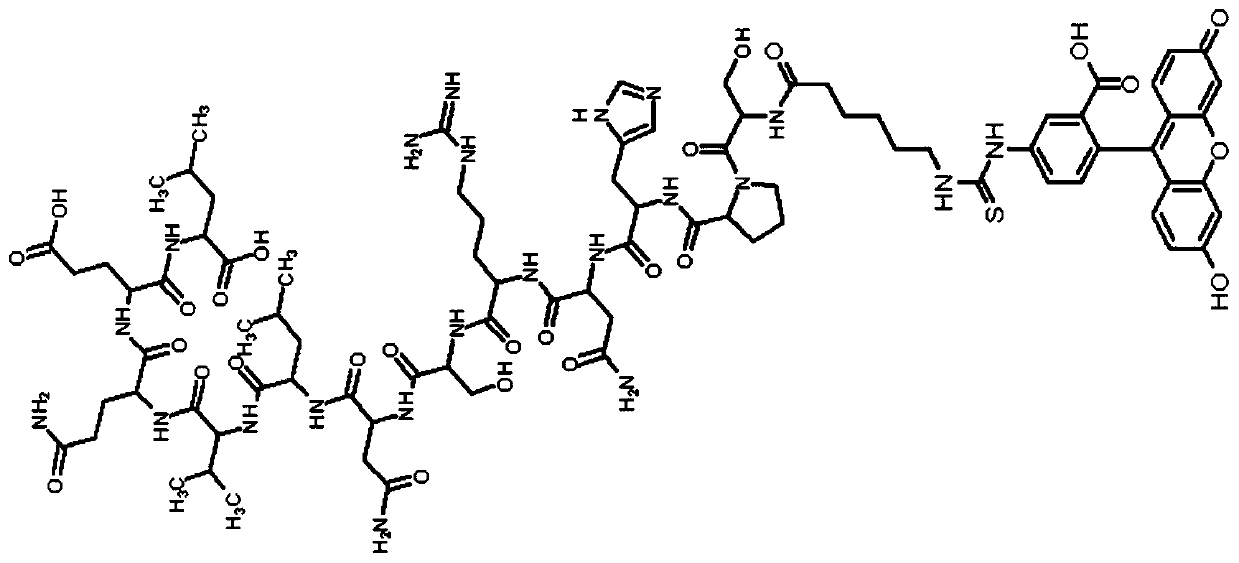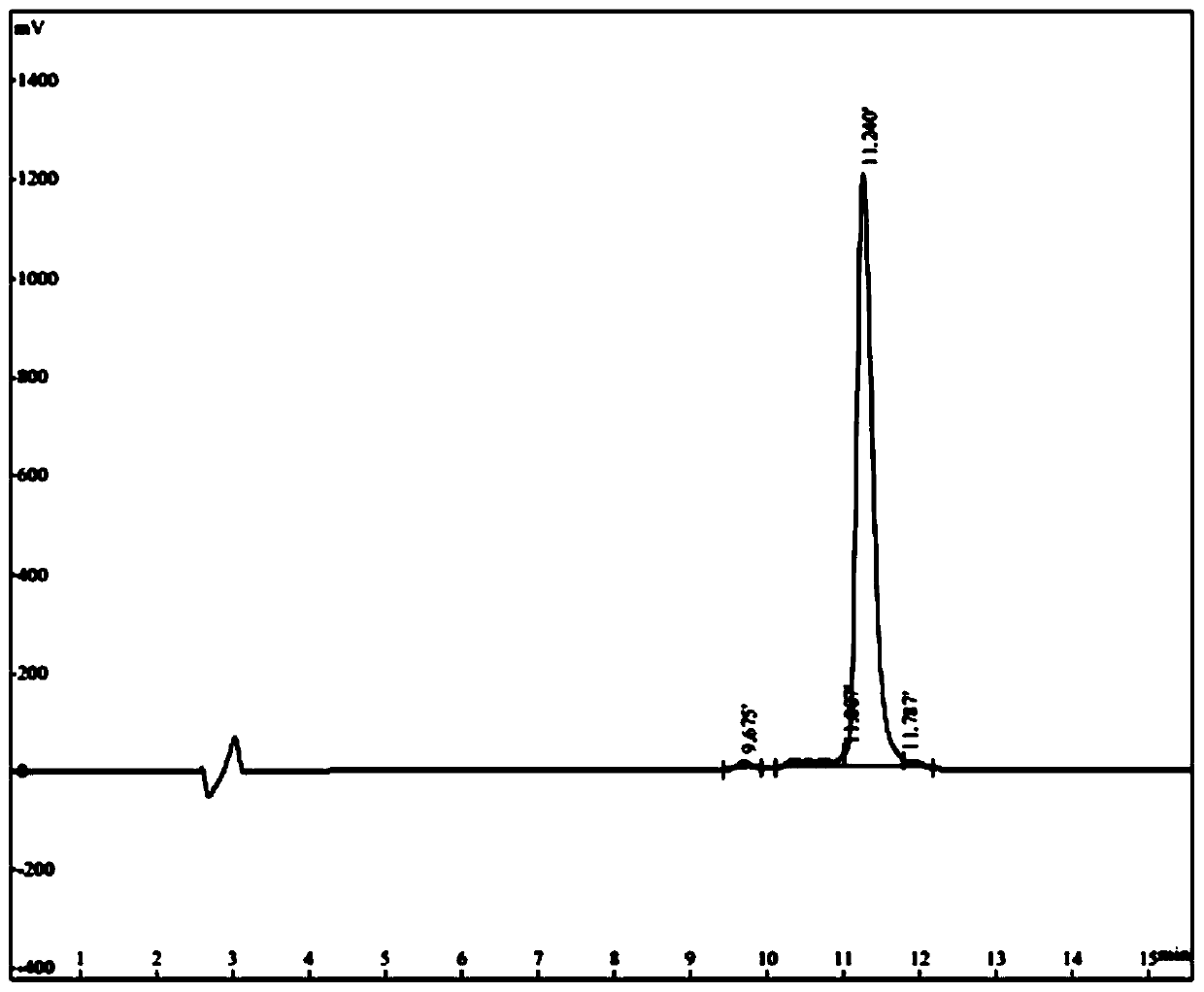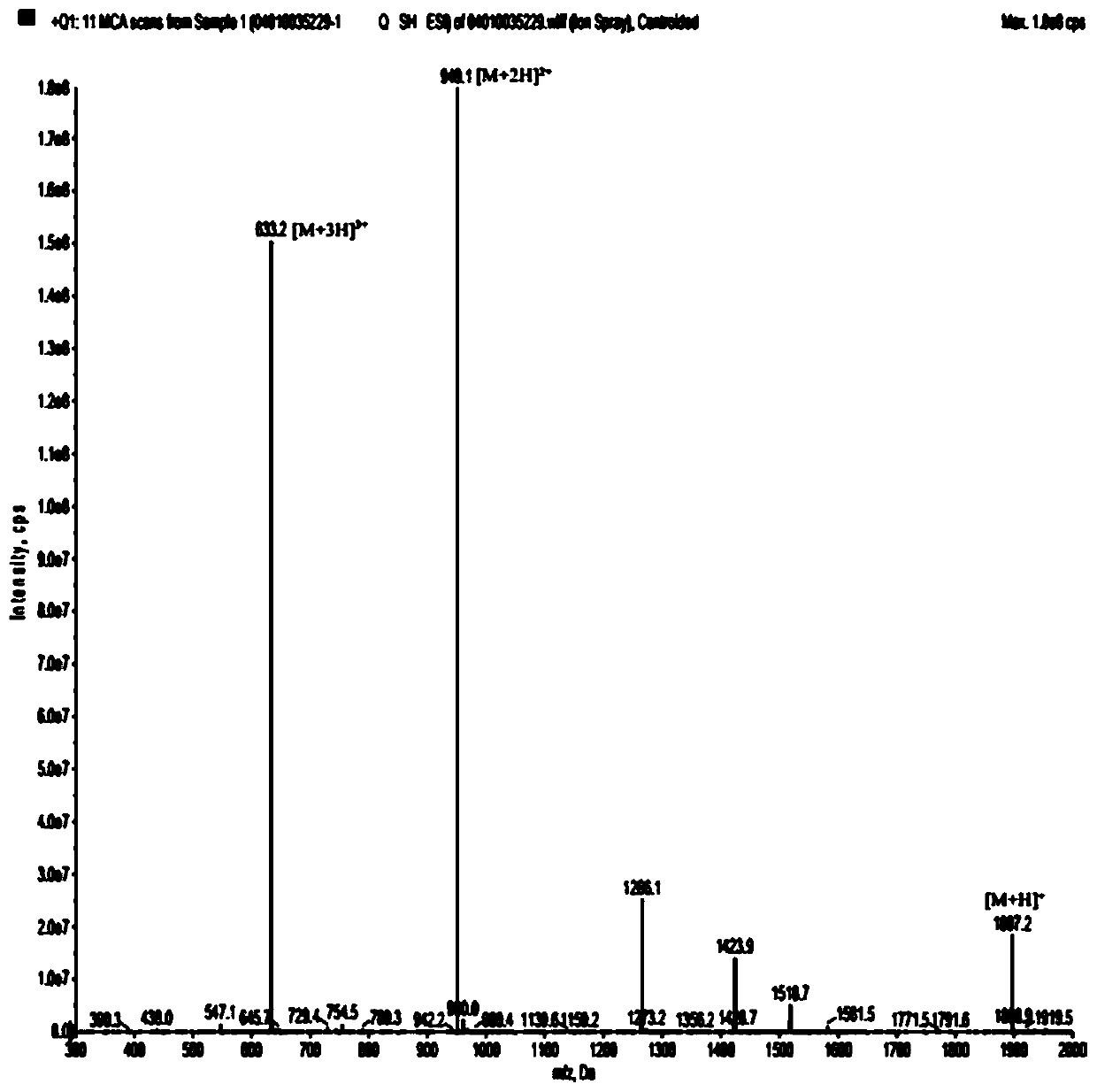Fluorescent probe for detecting C-reactive protein and preparation method thereof
A fluorescent probe and reactive protein technology, applied in the field of molecular biology, can solve the problems of high cost, difficult to obtain, cumbersome preparation of CRP monoclonal antibody, etc., and achieve the effect of good use effect.
- Summary
- Abstract
- Description
- Claims
- Application Information
AI Technical Summary
Problems solved by technology
Method used
Image
Examples
Embodiment 1
[0038] Using CRP Standards to Establish Standard Detection Curves for Fluorescent Probes
[0039] 1. Screening of specific affinity ligands (screening includes non-specific elution and specific elution)
[0040] (1) The first round of non-specific elution
[0041] a. Use 0.1mol / L, pH 8.6 NaHCO for CRP 3 The solution was prepared as a 100 μg / mL solution. Take 1 mL of this solution and coat it on a sterile polystyrene petri dish (60×15 mm), and carefully rotate repeatedly until the surface of the petri dish is completely wet. After completion, place the culture dish in a plastic box covered with wet gauze and incubate overnight at 4°C.
[0042] b. After overnight incubation, pour off the coating solution in the petri dish, and shake vigorously on the filter paper that has been irradiated by ultraviolet light to remove the residual coating solution. After removing the residual liquid, add 2 mL of blocking solution to the Petri dish, and block at 4°C for more than 1 hr.
[00...
Embodiment 2
[0110] A specific affinity ligand of C-reactive protein, the amino acid sequence of the ligand is: S-P-H-N-R-S-N-L-V-Q-E-L.
[0111] The preparation method of the above-mentioned specific affinity ligand comprises the following steps:
[0112] 1) Coat CRP, discard the coating solution and add blocking solution to block after coating overnight, then discard the blocking solution and wash with TBST buffer, then mix and incubate with phage, and then wash the phage that specifically binds to CRP take off,
[0113] 2) Repeat step 1) several times; the phages used for mixed incubation in each time were amplified to a quantity of 2×10 after being eluted the previous time. 11 pfu of phage that specifically binds to CRP;
[0114] 3) For the phage specifically bound to CRP obtained in step 2) for the last time, titer determination was carried out, and the number of plaques was about 10 2 The blue spot was randomly picked on the titer determination plate, and the ssDNA was extracted a...
Embodiment 3
[0122] A specific affinity ligand of C-reactive protein, the amino acid sequence of the ligand is: S-P-H-N-R-S-N-L-V-Q-E-L.
[0123] A method for preparing the above-mentioned specific affinity ligand, comprising the following steps:
[0124] 1) Coat CRP, discard the coating solution and add blocking solution to block after coating overnight, then discard the blocking solution and wash with TBST buffer, then mix and incubate with phage, and then wash the phage that specifically binds to CRP take off,
[0125] 2) Repeat step 1) several times; the phages used for mixed incubation in each time were amplified to a quantity of 2×10 after being eluted the previous time. 11 pfu of phage that specifically binds to CRP;
[0126] 3) For the phage specifically bound to CRP obtained in step 2) for the last time, the titer was measured, and blue spots were randomly picked from the titer measuring plate with 30 to 300 plaques, and the ssDNA was extracted and then sequenced .
[0127] Wh...
PUM
 Login to View More
Login to View More Abstract
Description
Claims
Application Information
 Login to View More
Login to View More - R&D
- Intellectual Property
- Life Sciences
- Materials
- Tech Scout
- Unparalleled Data Quality
- Higher Quality Content
- 60% Fewer Hallucinations
Browse by: Latest US Patents, China's latest patents, Technical Efficacy Thesaurus, Application Domain, Technology Topic, Popular Technical Reports.
© 2025 PatSnap. All rights reserved.Legal|Privacy policy|Modern Slavery Act Transparency Statement|Sitemap|About US| Contact US: help@patsnap.com



